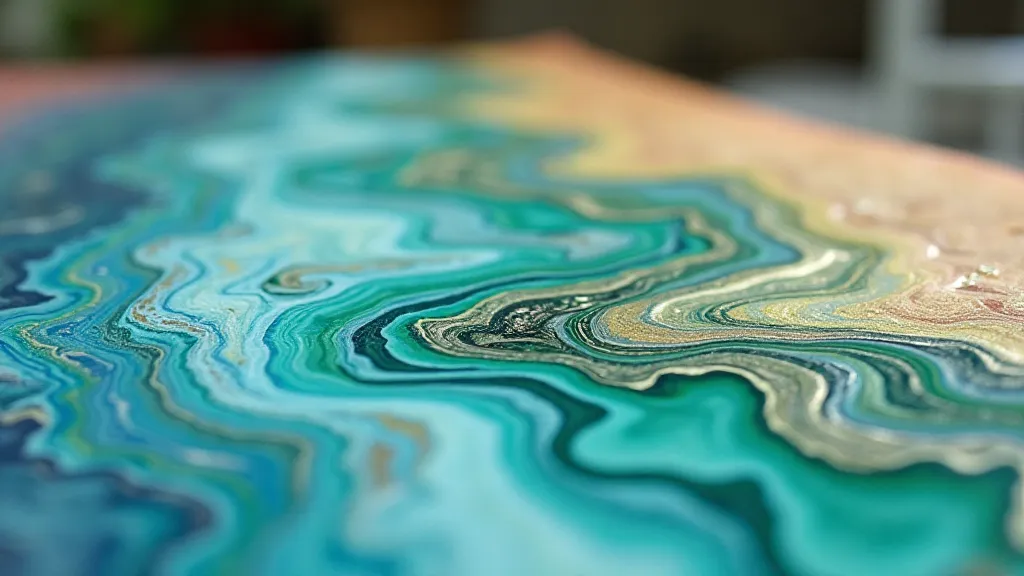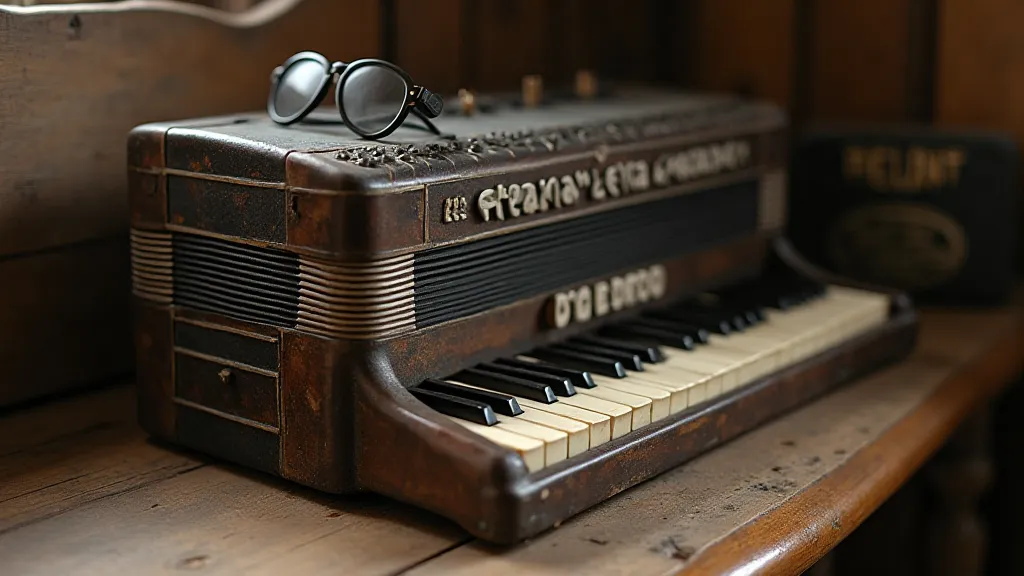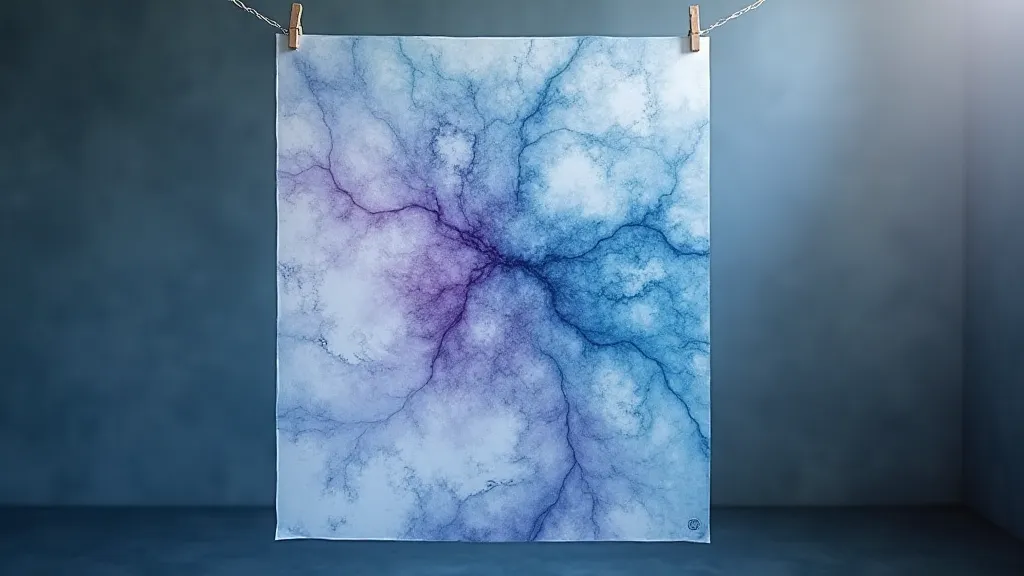The Ripple Effect: How Small Changes Can Create Big Impacts
There's a quiet, almost meditative beauty in watching paper marbling unfold. It's a process where chaos and control dance a delicate waltz, a visual testament to how seemingly insignificant actions can create profound and unexpected beauty. It’s not unlike the journey of an antique accordion, its history etched not just in its physical form, but in the subtle shifts of its mechanism and the evolution of the music it has cradled. Both offer a powerful lesson: the ripple effect. A single drop of ink, a minuscule adjustment to a bellows, and the whole composition—the marbled paper, the accordion's tone—is irrevocably altered.
I remember the first time I tried paper marbling. I approached it with a rigid expectation of perfection, envisioning a precise pattern, a predictable outcome. The reality, of course, was far more fluid. My carefully measured drops of color bloomed and merged, swirling into shapes I hadn't intended, defying the boundaries I had tried to impose. Frustration threatened to overwhelm me, but then I started to see the charm in the unexpected. These weren't failures; they were unique, individual pieces of art born from the interplay of chance and technique. It's a feeling mirrored in the care of old accordions – it’s not about forcing them back to a former glory, but understanding and preserving the history and character imprinted within them.

The Delicate Dance of Ink and Water
The core principle of paper marbling relies on a fascinating chemistry. Pigments, insoluble in water, are coaxed to float on the surface by the aid of a binding agent, often carrageenan or methylcellulose. This creates a “floating paint” that can be manipulated with various tools – combs, rakes, brushes – to create mesmerizing patterns. The process requires not just technical skill, but a willingness to surrender to the unpredictable. Just as a musician might improvise within a structured piece, the paper marbler improvises with the flowing colors, adapting to the unexpected blooms and swirls. A slight shift in water temperature, a difference in the air pressure, even the age of the paper itself, can affect the final outcome. It’s a beautiful demonstration of how small changes propagate through a system, resulting in a vastly different overall effect.
Consider the historical context. Paper marbling, also known as Ebru in Turkey, has a rich and fascinating heritage, stretching back centuries. Its roots are intertwined with Sufi mysticism, the patterns often seen as reflections of the cosmos. The swirling shapes were intended to evoke a sense of movement, of spiritual ascent. Knowing this lineage adds another layer of appreciation for the art form – a realization that the ripple effect isn't just about visual aesthetics; it's about carrying a legacy, a tradition passed down through generations.
The Heartwood and the Hinge: Accordions as Analogues
My grandfather collected antique accordions. He wasn't a musician himself, but he possessed a deep reverence for these instruments, seeing in them a tangible connection to the past. He’s the one who first explained to me the subtle art of preservation, not restoration. "You don’s try to make it new," he’s told me, “You learn to listen to it.” He would gently clean the keys, oil the reeds, and replace worn bellows, but always with the goal of preserving the accordion’s inherent character, its individual story. An accordion that’s been cherished for a century carries a weight of history – the dances it’s accompanied, the songs it’s sung, the laughter it’s shared. Removing the patina, replacing original parts with pristine reproductions, is to erase a portion of that narrative.
The intricate mechanisms within an accordion are remarkably sensitive. A tiny speck of dirt in a valve can silence a note, a slight misalignment in a reed can distort the tone. Repairing these instruments demands patience, a keen eye for detail, and a deep understanding of their construction. It’s a process of careful observation – noticing the subtle nuances of the bellows' movement, listening intently for the faintest breath of sound. And just as in paper marbling, a single, seemingly insignificant adjustment can dramatically alter the overall performance. A slight tightening of a screw, a gentle cleaning of a reed, and the accordion’s voice can be resurrected, richer and more resonant than it has been in years. The value isn's in its newness, but in the layers of history it contains.

Preservation, Not Perfection
The temptation to “perfect” something—to erase the marks of time, to impose a rigid ideal—is a powerful one. But in both paper marbling and accordion restoration, true beauty lies in the embrace of imperfection. The splotches and swirls in marbled paper aren’t flaws; they’s unique signatures, marks of the process. The cracks and worn keys on an accordion aren’s blemishes; they’s evidence of a life well-lived, a testament to its enduring value. It’s about understanding that the ripple effect, the chain of small changes that shapes our creations, isn’s something to be controlled; it’s something to be celebrated.
There’s a profound lesson here that extends far beyond the realms of art and craftsmanship. It's a reminder that even the smallest actions can have far-reaching consequences, that even the most seemingly insignificant details can shape our lives in unexpected ways. It’s a call to embrace the beauty of the unexpected, to appreciate the value of imperfection, and to recognize that the ripple effect, the dance of chaos and control, is what makes life so endlessly fascinating.
The next time I approach a sheet of paper or an old instrument, I will try to remember the lesson of the ripple effect: a single drop, a subtle adjustment, can create something truly beautiful. And in that beauty, there lies a deeper truth about the nature of creation and the enduring power of the unexpected.






